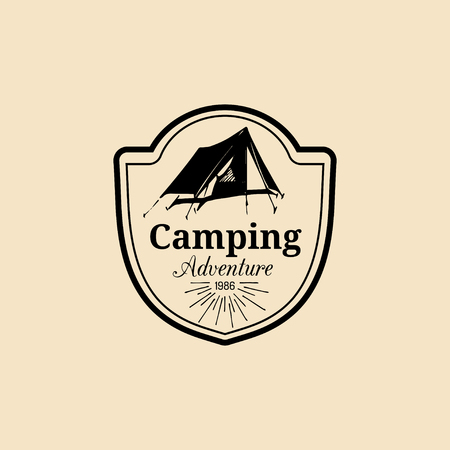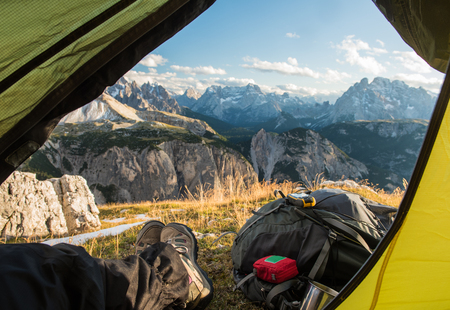Understanding Highland Weather Patterns
If you’re dreaming of wild camping in the Scottish Highlands, be prepared for weather that’s as dramatic as the landscape. Forget what you’ve seen in glossy travel brochures—Scotland’s weather is famously fickle, and nowhere is this more true than in the Highlands. The old saying goes, “If you don’t like the weather, just wait five minutes,” and it couldn’t be more accurate. In one afternoon, you might experience glorious sunshine, thick mist, driving rain, and howling winds—all before tea time.
A common myth is that it rains all the time in Scotland. While it’s true that rain is frequent, especially from October to March, it’s the unpredictability and rapid changes that catch most wild campers off guard. Even during summer months, sudden downpours can sweep across glens without warning. The Highlands are shaped by their proximity to both Atlantic and North Sea weather systems, which means conditions can shift quickly and dramatically depending on your location—one valley may be basking in sun while another is shrouded in cloud and drizzle.
Actual conditions vary by season and altitude. Lower areas can be humid and midge-ridden after rain, while higher ground often brings colder temperatures and fierce gusts year-round. It’s not uncommon for seasoned campers to wake up to frost in June or get battered by gale-force winds in August. For anyone planning a wild camping adventure here, understanding these patterns isn’t just interesting—it’s absolutely essential for staying safe and comfortable under canvas.
2. Choosing the Right Rain Kit for Wild Camping
When it comes to wild camping in the Highlands, your rain gear isn’t just another item on your kit list—it’s the difference between a cracking adventure and a miserable trudge through sodden landscapes. Forget what looks good in shops or ticks boxes online; here’s how to select waterproofs, boots, and shelter that truly stand up to unpredictable Highland weather.
Waterproofs: Beyond the Labels
A proper waterproof jacket and trousers are non-negotiable. In the Highlands, “showerproof” just won’t cut it. Look for a jacket with at least 20,000mm hydrostatic head rating, taped seams, a storm flap over the zip, and adjustable cuffs and hood. Pit zips for ventilation are a blessing when you’re slogging up Munros but still want to keep dry. For trousers, full-length side zips make it easier to pull them over muddy boots mid-downpour.
| Feature | Why It Matters |
|---|---|
| High Hydrostatic Head Rating (20,000mm+) | Keeps out torrential Highland rain |
| Taped Seams | Prevents leaks along stitching |
| Adjustable Hood & Cuffs | Stops water sneaking in during gales |
| Pit Zips / Ventilation | Reduces sweat build-up on steep climbs |
| Full-Length Trousers Zip | Makes changing quick without removing boots |
Boots: Trusty Footwear for Boggy Ground
A good pair of waterproof boots is essential—forget trainers or shoes labelled as “water-resistant”. In the Highlands, expect relentless bogs and hidden streams. Leather boots with a Gore-Tex lining offer top-notch durability and waterproofing, but remember they need breaking in before your trip. Synthetic options can be lighter and dry quicker if soaked but might not last as long on rough terrain.
Quick Boots Comparison:
| Type | Pros | Cons |
|---|---|---|
| Leather (with Gore-Tex) | Durable, very waterproof, supportive for ankles | Heavier, longer drying time if saturated |
| Synthetic (with membrane) | Lighter, dries faster if wet, often cheaper | Less robust on rocky ground, may wear out quicker |
Shelter: What Actually Keeps You Dry?
Your tent or bivvy bag is your fortress against Highland downpours and howling winds. Choose a tent with a hydrostatic head of at least 3000mm for the flysheet and 5000mm for the groundsheet. A double-wall design (inner mesh plus outer fly) helps prevent condensation drenching your sleeping bag. Make sure your tent is low-profile—those Scottish gusts will flatten anything too tall or flimsy.
Shelter Tips:
- Check for sturdy guy lines and robust pegs—they’ll hold fast even in soggy turf.
- Pole sleeves are better than clips in strong winds; they distribute force more evenly.
- If you’re using a tarp or bivvy setup, combine with a waterproof groundsheet and pitch somewhere sheltered from prevailing wind.
The bottom line? Invest in proven kit that’s stood up to real Highland storms—ask locals or seasoned hillwalkers for recommendations rather than relying solely on brand hype. Your comfort (and sanity) will thank you when the heavens inevitably open.

3. Pitch Perfect: Setting Up Camp to Outsmart the Rain
If you’ve ever woken up in the Highlands with soggy socks and a puddle creeping under your sleeping mat, you’ll know that where you pitch your tent is as important as the kit you bring. The Scottish weather is notorious for its unpredictability—one minute it’s blue skies, the next you’re battered by sideways rain. Here are some real-world strategies to ensure your wild camping spot stays dry and comfortable, no matter what the clouds throw at you.
Scout Like a Pro: Avoiding Boggy Ground
First rule of Highland pitching: never set up camp in a dip or hollow, no matter how tempting it looks on a breezy day. These spots become natural basins during rainfall, turning your tent into a miniature loch overnight. Instead, look for gently sloping ground—not too steep, but enough to let water run off. Test the ground with your boot: if it squelches or leaves an imprint, move on. Mossy or peaty patches may seem soft but are often sponges waiting to soak through your groundsheet.
Wind and Shelter: Reading the Landscape
The wind can be both friend and foe. While a breeze keeps midges at bay, exposed ridges or hilltops can leave you fighting flapping canvas all night. Tuck your tent behind natural windbreaks like gorse bushes, boulders, or low rises. If you’re near trees, avoid pitching directly beneath old branches—Highland storms can snap limbs without warning.
Smart Tent Setup: Rain Runs Off, Not In
Always orient your tent so the narrowest end faces into the prevailing wind (usually from the west), helping rain sheet off rather than batter broadside. Peg out your flysheet tautly to prevent sagging and allow runoff; loose fabric collects water and leaks. If using a footprint or groundsheet, make sure it doesn’t stick out beyond the tent—otherwise rain will collect and channel underneath you. Before climbing inside for the night, check all zips and vents are secure but ventilated to minimise condensation.
With these practical steps, you’ll wake up dry even if the Highland weather does its worst—a genuine game-changer for any wild camper braving Britain’s unpredictable wilds.
4. Keeping Dry On The Move: Packing and Layering Essentials
Staying dry in the Highlands is about more than a decent waterproof jacket—it’s about smart packing and mastering the British art of layering. When wild camping, unpredictable weather can turn a scenic walk into a soggy ordeal if you’re not prepared. Here’s a practical guide to efficient packing hacks and tried-and-tested layering techniques to keep you bone dry and comfortable during even the fiercest downpour.
Packing Hacks for Highland Downpours
Every seasoned wild camper knows that packing right is half the battle won. Here are some clever tips to keep your kit—and yourself—dry:
| Packing Hack | Why It Works |
|---|---|
| Dry Bags/Stuff Sacks | Keep clothing, electronics, and food separate and watertight inside your rucksack. Opt for multiple smaller bags rather than one large one for better organisation. |
| Liner & Rain Cover Combo | Use a rucksack liner (heavy-duty bin bag works in a pinch) inside your pack, and a rain cover outside for double protection against sideways rain. |
| Quick-Access Waterproofs | Stash your waterproof jacket and trousers at the very top of your pack or in external pockets—don’t get caught rummaging mid-downpour! |
| Ziploc Bags | Ideal for maps, phones, and small essentials that need extra protection without bulk. |
| Sacrificial Towel or Microfibre Cloth | Handy for mopping up tent puddles or drying off wet gear before it goes back in your bag. |
The British Layering System: Stay Toasty, Not Sweaty
The key to comfort is regulating your temperature while keeping moisture out. Here’s the classic three-layer system most UK hikers swear by:
| Layer | Typical British Choice | Purpose |
|---|---|---|
| Base Layer | Merino wool or synthetic thermal top (avoid cotton) | Wicks sweat away from skin; stays warm when damp |
| Mid Layer | Light fleece or insulated gilet | Adds warmth; breathable to prevent clamminess during strenuous hill climbs |
| Outer Shell | GORE-TEX or similar fully waterproof jacket/trousers with taped seams and adjustable hood/cuffs | Keeps rain out; blocks wind while allowing sweat vapour to escape |
Pitfalls to Avoid While Layering in the Highlands:
- Avoid over-layering: Too many layers will leave you sweaty, then cold as soon as you stop.
- No jeans or cotton: These soak up water and chill you fast in Highland winds—stick with quick-drying technical fabrics.
A Final Word on Footwear & Accessories:
- Socks matter: Pack spare merino socks in a dry bag—changing into dry socks at camp is pure bliss.
- Bog-proof boots: Wellies might cut it for a muddy walk, but for proper hiking invest in waterproof walking boots with good ankle support.
- Ponchos vs. Jackets: Ponchos are great for quick stops but tend to flap around on exposed ridges. Stick with a fitted jacket when moving fast.
Nail these packing and layering essentials, and Highland rain will become just another part of the adventure—not an obstacle.
5. Warm Meals and Hot Brews: Cooking in the Wet
Nothing lifts Highland spirits like a piping hot meal or a strong cuppa after slogging through sideways rain. But preparing anything remotely warm when wild camping in classic Scottish drizzle takes a fair bit of know-how, some grit, and a dash of British improvisation.
Sheltering Your Stove
First up, you’ll need a reliable way to shield your stove from relentless wind and rain. A lightweight tarp or a robust storm shelter is your best mate here—just remember to keep it well-ventilated for safety. Site selection is half the battle: tuck yourself behind a natural windbreak like gorse bushes or a rocky outcrop if you can. If you’re using a gas canister stove, keep the canisters warm in your jacket before use; Highland chill saps their performance.
Kit That Can Take a Soaking
Go for stoves with broad burner heads that cope better with gusts and soggy conditions—classic Trangia or Jetboil systems are proven choices among UK wild campers. Invest in waterproof matches and stash a mini fire steel as backup (the Highlands have no mercy for careless campers). Keep your cooking kit in drybags; nothing spoils dinner like discovering your pasta’s gone mushy in your pack.
Fail-Safe Meal Ideas
Forget fiddly recipes—stick to hearty, one-pot wonders. Instant porridge, packet soups, and boil-in-the-bag curries are classics for good reason: they require minimal fuss and warm you through in minutes. Toss in a handful of oatcakes for extra calories, and always pack more tea bags than you think sensible—there’s nothing more British than braving foul weather with a mug of builder’s brew.
Lessons from the Soggy Side
If your stove gets damp, dry it out thoroughly before relighting—moisture can cause misfires and frustration. Always prep everything before you start cooking: chop, measure, and portion inside your tent vestibule to minimise time spent faffing in the wet. And never underestimate the mood-boosting power of sharing biscuits around while you wait for the kettle to boil under gloomy Highland skies.
The weather might be unpredictable, but with the right kit and some local savvy, there’s no reason not to enjoy hot meals and proper tea—even when it’s raining stair-rods outside your bivvy.
6. Making the Most of Grey Days: Mindset and Safety
Embracing the Elements: Turning Rain Into an Ally
Wild camping in the Highlands means accepting that rain is more than just a weather forecast—it’s part of the adventure. The right mindset transforms a soggy day into a story worth telling. Instead of dreading drizzle, see it as a chance to experience the landscape at its wildest and most dramatic. Take pleasure in the sound of rain on your tent, the fresh scent of wet earth, and the sight of mist rolling over distant glens. A positive attitude not only boosts morale but also keeps you alert and resourceful in challenging conditions.
Top Mindset Tips for Rainy Highland Adventures
Stay Flexible With Your Plans
If the weather turns, don’t hesitate to adjust your route or camp location. Embrace spontaneity; some of the best memories come from unexpected detours prompted by Highland showers.
Find Joy in Small Comforts
Celebrate little victories—like dry socks or a steaming cup of tea brewed under a tarp. These creature comforts become highlights when grey skies persist.
Keep Laughing
A sense of humour goes a long way when you’re wringing out your kit for the third time. Share a joke with your mates or have a chuckle at your own expense; it lightens even the dampest mood.
Safety Pointers for Highland Weather’s Wilder Moments
Monitor Local Conditions Religiously
The weather can shift rapidly in the Highlands, especially around mountains and lochs. Keep an eye on reliable forecasts like the Met Office or Mountain Weather Information Service before and during your trip.
Know When to Call It
If river crossings swell, visibility drops, or winds become dangerous, have no shame in retreating to safety. The hills will still be there tomorrow—don’t risk it for the sake of pride or schedule.
Avoid Flood-Prone Areas
Choose high ground when pitching your tent and avoid setting up near streams or boggy hollows that could quickly flood after heavy rainfall.
Stay Warm and Dry
Packed layers are your best friend. Change out of wet clothes promptly, keep spare kit dry in waterproof bags, and always have an emergency shelter to hand.
The Final Word: Adventure Awaits, Whatever the Weather
Rainy Highland days are simply part of what makes wild camping here so memorable. With the right mindset and respect for safety, every downpour becomes another tale to tell. So don’t let grey skies put you off—embrace them, stay savvy, and enjoy the unique thrill of wild camping in Britain’s most unpredictable landscapes.

